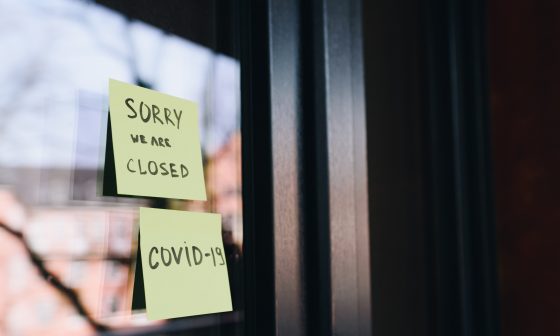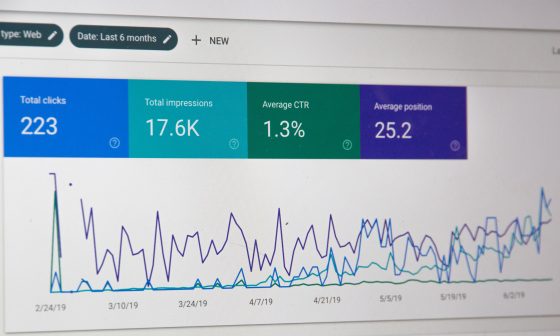Look ahead to anticipate changes and trends to come. What changes are expected by consumers after COVID-19, and how can you change your business to adapt?
Understand Your Customer’s Needs Post COVID-19
COVID-19 is still surging, and for some, it may seem that there is no end in sight. The world is changing in response to this global pandemic, and companies have found themselves scrambling to keep up with changing regulations and consumer habits. When the pandemic finally slows down and the social distancing regulations are lifted, do not find your business once again scrambling to keep up. Consider the changes to expect from consumers and what you and your business can do now to meet these needs.
Retail demand might be low right now. Amperity’s COVID-19 Retail Monitor found that North American retail demand is down 90%. Some numbers, however, are rising. Streaming and time on social media are increasing rapidly. E-commerce has experienced a massive surge in demand, and many are turning to delivery services to receive food.
E-commerce
E-commerce was already increasing in use before the spread of COVID. However, recent events fast-tracked that growth, and this is one behavior shift that seems likely to stay. Now that consumers have become even more comfortable shopping online, it is fair to assume that they will continue to do so, even once restrictions lift. Take a look at China, for example. Following the lift of the quarantine, e-commerce which did well during the quarantine was still up 3% when compared to the pre-COVID period.
Online Marketing
In response to the growing use of e-commerce, SEO and search trends have been impacted, and likely will remain changed for the foreseeable future. Data shows that consumers are currently researching:
– Essential eCommerce stores: searchers are looking for toilet paper, hand sanitizer, thermometers, cleaning wipes, and face masks.
– Health and wellness: symptoms, remedies, essential oils, antibacterials, antiviral foods and hers, and prevention methods.
– News: consumers are searching for local and global news.
– Food: recipe searches are up, while restaurants and public eateries are down.
As a business owner keeping an eye on your analytics, remember that data is likely skewed through this time. Once COVID dies down, consumers are likely to search less often for hand sanitizer and face masks. However, interaction with the online presence of businesses is increasing and will continue to do so. Users want to know how your business is responding to current events, and certain things that are very important to them now – cleanliness, safe business practices, and responsible management – will remain important to them once COVID has passed. This leads directly to the next point.
Perception
The perception consumers have of your business and how it responds to a global pandemic will last even after the world returns to normal. Creating a perception of a company that is responsible and community-focused will color your business positively going forward. Companies exploiting the current market aggressively to benefit while their communities suffer will likely experience a loss in consumer loyalty.
It is also being advised against having sales and deals marketed specifically as “Coronavirus sales”. Consumers are unlikely to view this positively.
Those companies not responding at all will also likely be regarded negatively by consumers. Statistics show that consumers are appreciating messages explaining what businesses are doing to stop the spread and how they are protecting their customers and employees. The American Association of Advertising Agencies found that 43% of consumers are reassured by hearing from trustworthy companies, and 40% would like to know how companies are responding to the pandemic.
One example of a company receiving negative attention for its COVID response is Amazon. The company is not offering its employees sick leave, nor does it seem to be keeping them protected from spreading the infection. These moves have sparked walk-outs, a federal investigation, and an internet call for consumers to boycott the e-commerce giant. Conversely, companies like Aldi and Costco, who quickly implemented social distancing practices and gave employees bonuses or offered priority shopping hours to first responders, are renewing their customer base.
A Focus on Hygiene
One thing that is certain to stay is an underlying fear of germs. After months of being told not to stand too close, that every object and surface around could be infected with a virus, and being in an enclosed space with someone can be dangerous, it will be hard for many to forget and go back to their lifestyle pre-COVID. After the quarantine is over, people may find themselves flinching back from shaking hands, or unwilling to handle oft-touched items. Current research shows that 87% of Americans would choose to shop in a store with touchless or self-checkout choices over one that does not have that option.
Businesses should make an effort to ease consumers back into normal life while creating a hygienic environment that makes them feel safe and protected from germs. Retailers are working to mitigate feelings of fear by creating a structured, clean environment. Businesses that work largely with people may want to scale back on face-to-face meetings, handshakes, and any other close contact.
Web Offerings
Most companies have likely long since created a solid web presence. In response to increased traffic, they may have continued to improve and grow this presence. However, don’t let this side of your business slow down once life has returned to normal. Hold on to the momentum and continue to increase and innovate your tech and social media side of your business. This is a part of the business world that is sure to only continue to grow. Even if things slow down right after people are no longer quarantined, web demand will continue to move forward. Make sure your company is moving forward along with it and not being left behind.
Wellness
One trend that forecasters expect to continue moving upwards post-COVID is an increased dedication to wellness. Consumers have been left feeling vulnerable and are more aware of their health limitations. The health and wellness industry was already increasing before COVID, but it is sure to remain a focus after.
About consumer change, Simon Siegel, the managing director of BMO Capital Markets, had this to say, “Many generational attitudes have been tied to singular events that leave their imprint. It remains to be seen if this is one of them, but it’s not hard to imagine that it will be.” Consumer behavior will likely be reshaped following months of COVID fear and a worldwide atmosphere of sickness. This change could be profound and lasting. Do what you can now to address these elements that consumers will be searching for, and shape your business so that it can provide them.


